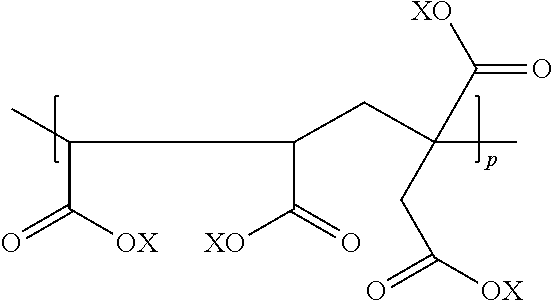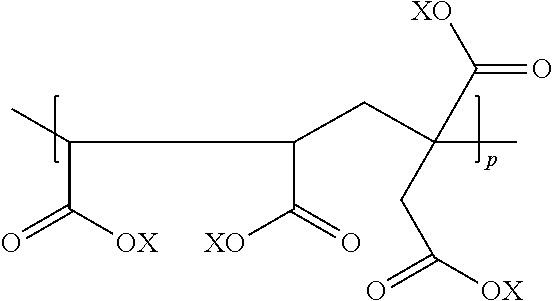Method of reducing atmospheric ammonia in livestock and poultry containment facilities
- Summary
- Abstract
- Description
- Claims
- Application Information
AI Technical Summary
Benefits of technology
Problems solved by technology
Method used
Image
Examples
example 1
[0026]In this test, a poultry layer house was treated having approximately 300 tons of litter in the house basement. The litter was treated with 25 gallons of the preferred liquid mixture, which was incorporated into the litter using a composting tractor with a sprayer mounted on the front and supporting a rear tank containing the mixture diluted with 75 gallons of water. Gaseous ammonia levels were determined prior to application of the treatment mixture on Days 1 and 3, on the day of treatment (Day 4), and thereafter on Days 5, 10, 11, and 12. Ammonia measurements were made at the exhaust fan and in the basement, with each measurement being taken three times and averaged. The following are the test results.
DayLocation / TempTreatmentAmmonia ppm1exhaust 68° F.None22.81exhaust 68° F.None55.33exhaust 50° F.None85.43exhaust 50° F.None84.81basementNone17.71basementNone55.33basementNone172.83basementNone116.74exhaust 27° F.treated8.64exhaust 50° F.treated324basementtreated19.14basementtre...
example 2
[0027]A hog-finishing house having a manure pit with a 250,000 gallon capacity was treated using 18 ounces of the preferred treatment per acre of ground to be fertilized using the treated manure. The treatment was poured onto the top of the manure in the pit, and ammonia readings were taken at the pit exhaust fan prior to and after treatment. The following results were recorded.
DayTreatmentAmmonia ppm1none751treated33(one hour aftertreatment, 2readings averaged)7treated1015treated718treated5
example 3
[0028]A slatted dairy barn with corn cob bedding was treated with the preferred treatment. The manure pit had a 1.2 gallon capacity, and the treatment was applied at 18 ounces per acre (213 acres @ 5600 gallons per acre. Ammonia readings were taken inside the barn at multiple points.
Ammonia ppmDayDetails / LocationTreatment(readings averaged)1within barn, 2 points, 15 mins.none33.02within barn, 2 points, 15 mins.none31.42within barn, 2 points, 15 mins.treated26.13within barn, 4 points, 40 mins.treated22.58within barn, 4 points, 40 mins.treated19.228within barn, 8 points, 60 mins.treated15.641within barn, 8 points, 60 mins.*treated1.3*20 loads of manure were removed prior to the readings
PUM
 Login to View More
Login to View More Abstract
Description
Claims
Application Information
 Login to View More
Login to View More - R&D
- Intellectual Property
- Life Sciences
- Materials
- Tech Scout
- Unparalleled Data Quality
- Higher Quality Content
- 60% Fewer Hallucinations
Browse by: Latest US Patents, China's latest patents, Technical Efficacy Thesaurus, Application Domain, Technology Topic, Popular Technical Reports.
© 2025 PatSnap. All rights reserved.Legal|Privacy policy|Modern Slavery Act Transparency Statement|Sitemap|About US| Contact US: help@patsnap.com


